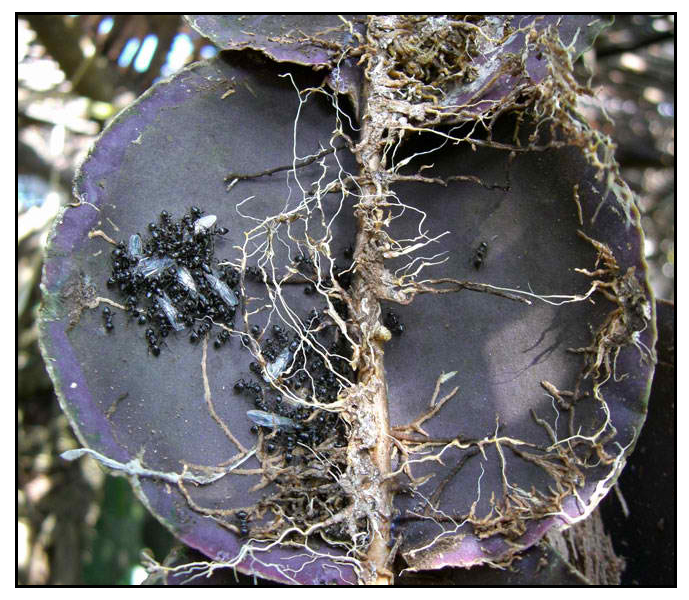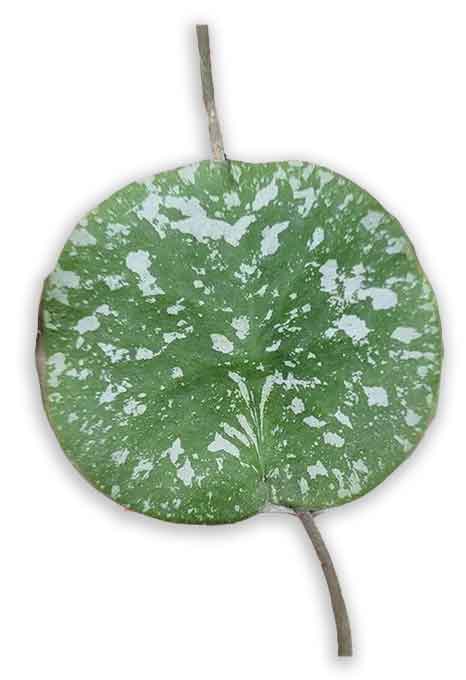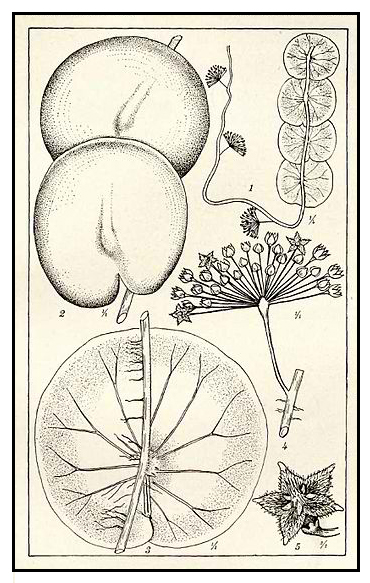
Family • Asclepiadaceae
Paui-pauikan
Hoya imbricata Decne
WAXF VINE
| Scientific names | Common names |
| Hoya imbricata Decne | Paui-pauikan (Tag.) |
| Accepted infraspecifics | Pikot-pikot (Agusan del Sur) |
| Hoya imbricata subsp. imbricata | Waxflower (Engl.) |
| Conchophyllum maximum H.Karst. | Wax plant (Engl.) |
| Hoya imbricata var. basicordata Koord. | Wax vine (Engl.) |
| Hoya maxima (H.Karst.) Warb. | |
| Hoya pseudomaxima Koord. | |
| Hoya imbricata subsp. megapollinia Kloppenb. | |
| Hoya imbricata Decne. is an accepted species with two accepted infraspecifics. KEW: Plants of the World Online | |
|
Botany Additional info
Distribution Studies |
Updatde August 2023 / November 2018 / December 2013
![]()
 |
| IMAGE SOURCE: / Photograph / Plant of the Month Hoya Imbricata by Bruce Brethauer / © photo by Merlin Sy / click on image or link to go to source page / COLUMBUS-CACTUS-CLUB |
| OTHER IMAGE SOURCE: / File:Hoya imbricata01.jpg / http://www.botanicus.org/page/699485# Philippine Journal of Science vol15 (1919) Sijfert Hendrik Koorders (1863-1919) / 1919 / Public Domain / Wikipedia |
| OTHER IMAGE SOURCE: Image : Hoya imbricata / leaf / © TropicsAtHome / Non-commercial use / image modified / click on image or link to go to source page / TropicsAtHome |
| Additional
Sources and Suggested Readings (1) Plant of the Month / Hoya Imbricata / by Bruce Brethauer / Columbus-Cactus-Club (2) Hoya imbricata / Wikipedia (3) Hoya imbricata / Bruce Brethauer / The Central Ohio Cactus and Succulent Society (4) Hoya imbricata / Synonyms / KEW: Plants of the World Online (5) Ethnomedicinal plants used for the treatment of cuts and wounds by the Agusan Manobo of Sibagat, Agusan del Sur, Philippines / Mark Llyod G Dapar, Ulrich Meve, Sigrid Liede-Schumann, Grebecio Jonathan D Alejandro / Ethnobotany Research & Applications, 2020 / DOI: 10.32859/era.19.31.1-18 |
• |
DOI: It is not uncommon for links on studies/sources to change. Copying and pasting the information on the search window or using the DOI (if available) will often redirect to the new link page. (Citing and Using a (DOI) Digital Object Identifier) |
| List of Understudied Philippine Medicinal Plants |
• |
 |
• |


 Gen info
Gen info The leaves typically grow close together, overlapping one another like roofing shingles or fish scales (the specific epithet "imbricata" refers to this similarity to roofing tiles). Ant colonize the space beneath the leaves, using adjacent leaves as "nurseries", food storage, or specialized rooms for the ant colony. The plant may absorb a significant amount of carbon dioxide exhaled by ants, providing the plants carbon needs for production of sugar, proteins and lipids. (
The leaves typically grow close together, overlapping one another like roofing shingles or fish scales (the specific epithet "imbricata" refers to this similarity to roofing tiles). Ant colonize the space beneath the leaves, using adjacent leaves as "nurseries", food storage, or specialized rooms for the ant colony. The plant may absorb a significant amount of carbon dioxide exhaled by ants, providing the plants carbon needs for production of sugar, proteins and lipids. (